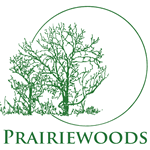“It was the best of times, it was the worst of times, it was the age of wisdom, it was the age of foolishness, it was the epoch of belief, it was the epoch of incredulity, it was the season of Light, it was the season of Darkness, it was the spring of hope, it was the winter of despair, we had everything before us, we had nothing before us, we were all going direct to Heaven, we were all going direct the other way—in short, the period was so far like the present period that some of its noisiest authorities insisted on its being received, for good or for evil, in the superlative degree of comparison only.”
—Charles Dickens, A Tale of Two Cities
These famous words, which open Dickens’ novel A Tale of Two Cities, were written nearly two hundred years ago. Often over these centuries, people have quoted them to describe the times they were living through. Since March of 2020, I have heard them repeated frequently to describe the times we are experiencing together now—and they do seem apropos.
It is sometimes easy to focus on one side or the other—the positive “best of times” or the negative “worst of times”—when, in reality, they are frequently coupled. Parker Palmer writes, “In the midst of depression I once asked my spiritual director how I could be feeling such despair when not long before the depression hit I had been feeling so close to God? ‘Simple,’ she said. ‘The closer you get to light, the closer you get to darkness.’ The deepest things in life come not singly but in paradoxical pairs, where the light and the dark intermingle” (from The Active Life: Wisdom for Work, Creativity, and Caring).
I’ve been meditating on paradoxical pairs this week, as we celebrate Holy Week in the Christian church. The week begins with bright celebration on Palm Sunday and ends with dark death on Good Friday. Or seems to end there. I remember seeing the movie version of “Godspell” for the first time on Good Friday afternoon when I was in high school. Since it was showing on network television, there were ample commercial breaks, one of which took place just as the Jesus character was crucified. I was so engrossed in the movie, that I was devastated. In tears I ran out of the house and into the woods across the street. For several hours I wandered by myself along the creek that ran through the wooded ravine. Lost, I walked until I came out of the woods into a part of town I recognized. After trudging the approximately four miles home, my frantic family surrounded me. When they asked what had happened, I explained that I had been overwhelmed by sadness and ran off to be alone. My brother laughed at me, saying, “But you left before the good part—duh, he gets resurrected! You missed the happy ending!”
That’s the thing I’ve been realizing about these paradoxical pairs: in real life they’re all jumbled together. The best and worst, the light and dark, the hope and despair are always nipping at one another’s heels. We can only read them as separate and distinct (or as pairs) in reflection, hindsight or perhaps in conversation with our spiritual companions. In daily living, we’re constantly whiplashing from one end of the pendulum swing to the other. The past two years, in particular, we’ve been pivoting and resilience-ing ourselves into a state of ongoing disequilibrium. If we stop reacting and responding to our times and allow ourselves some space and time for reflection, we may be able to stop reeling from dizziness and see not only the problems and fears contained within these “interesting times,” but also begin to see the gifts within them as well.
Holy Saturday, or the Easter Vigil, is such a pause within Holy Week. A time for quiet reflection, for catching our breath, for looking within before the upswing of joy that is Easter. Holy Week doesn’t end with death, it ends with new life. And wherever these best/worst times take us, they will too—even if that new life bears little resemblance to our old definitions or expectations.
I leave you with this Easter Blessing by David Whyte, which offers his take on reconciling paradoxical pairs, and on resurrection:
EASTER BLESSING
The blessing of the morning light to you,
may it find you even in your invisible
appearances, may you be seen to have risen
from some other place you know and have known
in the darkness and that that carries all you need.May you see what is hidden in you
as a place of hospitality and shadowed shelter,
may that hidden darkness be your gift to give,
may you hold that shadow to the light
and the silence of that shelter to the word of the light,
may you join all of your previous disappearances
with this new appearance, this new morning,
this being seen again, new and newly alive.—David Whyte, from EASTER BLESSING, In Memoriam John O’Donohue
—Jenifer Hanson, Prairiewoods director


